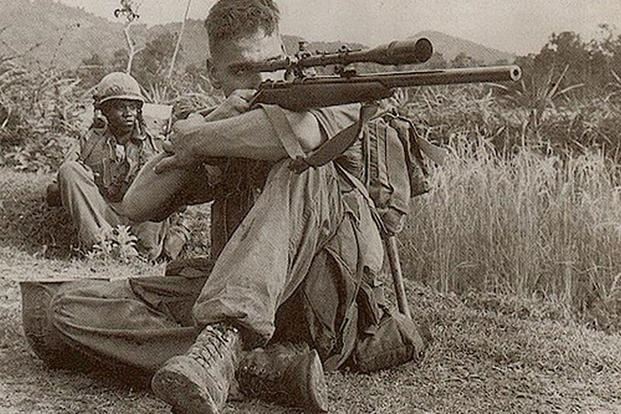By the time
Operation Barbarossa reached the gates of Stalingrad, the Red Army already was suffering from a shortage of manpower. And because of the symbolic importance of "Stalin City" (
Stalin gorod) they began aggressively recruiting women as snipers.
Soviet snipers ran up huge scores -- especially in battles like
the seige of Stalingrad -- because they had been ordered not to retreat. Kill Germans until either you are killed or they cease coming. Not that they wouldn't have fought fiercely anyway. Patton once said something to the effect that 'you might kick my ass clean across Mexico, but come the border of Texas, you've got a by-god fight on your hands.' IOW, it's natural to fight all the harder to defend home(land) and hearth.
But them other guys, them pesky Nazis, they wouldn't stop advancing because they served an equally ruthless dictator who would have had them shot for cowardice if they failed to march straight into the jaws of certain death. Which created a target-rich environment for the Soviet snipers.
One of the things Hollyweird almost always gets wrong is that the standard method for dealing with a sniper ... is artillery. Artillery has been the infantryman's best friend (or worst enemy, if it's the enemy's) ever since there've been cannon. And by WWI the
mortar had evolved into man-portable artillery piece that followed the lowly infantryman everywhere he went.
Trying to advance on a sniper's position is just playing to his strength. Let the mortarmen deal with it. Which is one reason so many snipers in WWII are noted to have been killed by artillery. And why sniper-on-sniper confrontations were exceedingly rare.
Stalin didn't give a fig about the snipers' casualty rate, he wanted his namesake city saved from Hitler. I've read sources stating that 80% of women Russian snipers were killed in the line of duty.






 Reply With Quote
Reply With Quote




